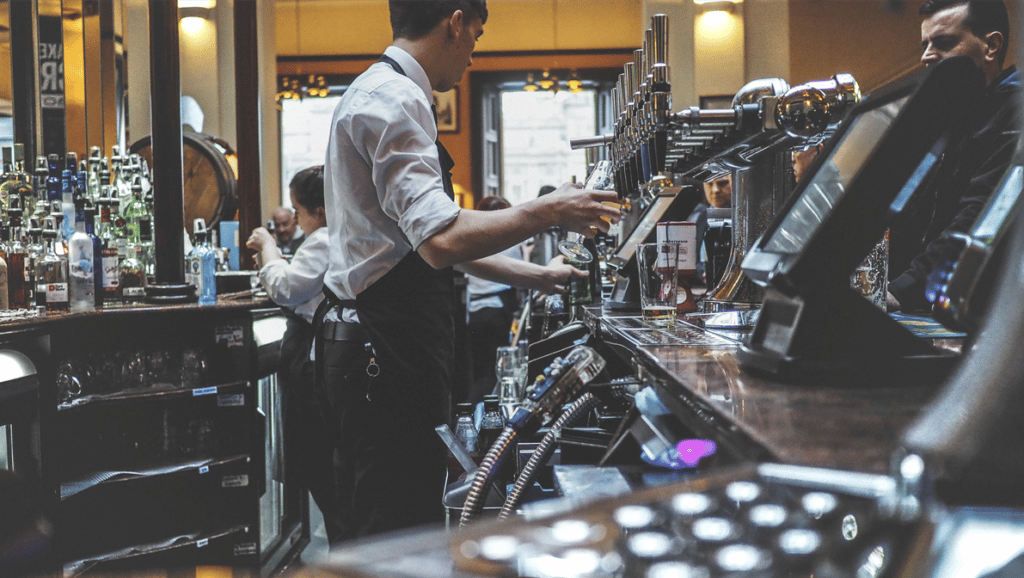Running your restaurant requires keeping track of tons of moving pieces. It’s a tough balancing act to oversee everything from your menu to your staff and customer experience.
So when it comes to your back office solution, maximizing performance is highly dependent on simplifying your restaurant management software as much as possible. With multiple management platforms that aren’t connected, you’ve added more overly complex pieces to your business.Many restaurant operators instead are turning to a complete back office solution to get accurate and timely data. With an all-in-one system with full integrations, you can increase productivity at all of your locations by getting better information in less time.
Here are five features to look for in your restaurant management software in order to maximize your restaurant group’s performance.
1. Powerful restaurant accounting abilities
Generic accounting software might have been sufficient for your needs when your restaurant group had only a few units. However, as with growth, your company has most likely outgrown the minimal features offered in generic solutions. Maybe the software can’t scale with your growth as operations become more complex, or it isn’t meeting the challenges specific to multi-location restaurants.
Restaurant-specific features and functionality in your restaurant accounting software can facilitate, rather than hinder, your growth. For example, this may include something like intercompany accounting, which records financial transactions between different legal entities within the same parent company—a functionality critical for multi-location restaurants.
In addition, restaurant-specific accounting features can enable you to streamline Accounts Payable with AP automation, creating a paperless workflow. Or, with automatic reconciliation for your credit cards, bank, or even delivery services, powerful accounting functionality can help your team save time and gain accuracy with your restaurant cash flow.
2. A suite of restaurant inventory management capabilities
Your inventory control is a key piece of your restaurant’s financial health, so robust inventory management software should be a central feature of any restaurant management software platform.
First and foremost, your inventory management system should be fully integrated with your Point of Sale (POS) system. Without integration, like in a generic accounting solution, you will need to manually import your sales data daily (or purchase a separate system to import it). An integrated system means you save time from manual data transfers, as well as gain accuracy without the mistakes that come from manually keying in data.
Advanced restaurant software also powers a few other key pieces of inventory control:
Comprehensive, Cost-Controlling Restaurant Inventory Management
The more useful your inventory data, the more powerful it is. Your restaurant management platform should enable daily access to inventory data. When your managers are empowered to make immediate adjustments, such as adjusting the purchase amount or spotting pricing errors, they can spot potential issues in real time and control food costs.
With restaurant-specific inventory management software, you can track items, auto-update item prices, record stock counts, and automatically create adjusting journal entries. Up-to-date data at your fingertips enables you to better avoid over- or under-purchasing, as well as address sources of food waste in order management.Especially if your restaurant group is scaling, consider looking for a solution that allows you to properly account for transfers between stores by tracking inventory shared between multiple locations.
Recipe Cost Tracking to the Penny
Along with inventory management, your restaurant management software should also offer recipe management. Tracking of your recipe costs, to the penny, allows you to leverage more advanced tools like menu engineering. Your inventory management can not only be a tool to examine your purchasing, but it can also help you understand the profitability and popularity of your menu items.
3. Hiring, scheduling and payroll tools
Labor is a major cost for your restaurant. Your restaurant management software should empower your store managers with the tools they need to optimize labor costs. And when you examine labor, consider also prioritizing how you can leverage HR and payroll tools to both improve retention rates and streamline processes for your staff.
HR Software to Hire and Retain the Best Employees
Restaurant management software that incorporate HR software can help benefit your organization in two ways.
First, HR software allows your HR department to focus more on strategy and less on repetitive tasks. Tools like streamlined applicant tracking systems during the hiring process, or automated online onboarding paperwork for new hires, can significantly save time for your staff. Second, a more efficient and thorough HR system helps drive a better experience—which can contribute to overall retention.
Data-Driven Scheduling
Employee scheduling software as part of your overall restaurant management software system can speed up a repetitive, time-consuming task for your managers. Save your managers’ time with tools like templates, centralized shift requests, and potential overtime alerts. With the integration of your sales forecasts (explored below), your managers can create fully optimized schedules based on your labor best practices, faster.
Scheduling software may also include features like a mobile employee app, which is a centralized communication tool for employees. A mobile app can simplify employee shift requests, help keep employees informed, and give managers authority over scheduling.
Forecasting for Labor Cost Optimization
Finally, forecasting enables your managers to better control labor costs. One of the most useful tools in restaurant management software is tracking costs by day part. With granular data, you can forecast your sales daily or even hourly. Combined with a custom labor matrix for each location, managers have the tools to match their scheduled labor to their optimal labor costs in real time using breaks, cuts, or call-ins.
Labor reporting can also include other helpful alerts, such as schedule enforcement that monitors overtime rules or allows restrictions on clocking in/out times.
On-Time, Accurate Payroll Software
Because the restaurant industry comes with many unique challenges, your payroll software should be restaurant specific. For example, you want to make sure rules around benefits administration or tipped employees are accommodated and updated in your payroll solution.
This is especially important as regulations and reporting requirements continue to shift in the labor market. For instance, with the rollout of Form 1099-NEC for the 2020 tax year, restaurants now need to separately report payments made to independent contractors.Some restaurant payroll software also offer advanced systems for tracking 1099 information for IRS reporting. A platform can allow restaurants to track 1099-MISC, 1099-NEC, and 1099-INT transactions by vendor, or organize processing by legal entity or common payer.
4. Seamless integrations
To maximize your restaurant’s performance, you need to have a complete, centralized picture of your restaurant’s profitability.With actionable data about your operations, everyone, from store-level managers to corporate operations, can focus on growth.
Especially after the 2020 year, one of the key operations areas to monitor has become the profitability of your off-premise channels—especially delivery. Integration with delivery operations has become more important than ever, so consider finding a restaurant management software system that provides full integration with your delivery platforms.
5. Restaurant business intelligence
Making data-informed decisions requires a large amount of accurate data. However, if your restaurant management software requires manual imports or reports, this creates a fundamental disconnect in your system.
If you have part of your team entering data, most likely your accountants or bookkeepers, they aren’t necessarily the restaurant operators or managers who need the data. Even if data and reports are done at the store level, you don’t want your managers stuck behind a computer screen instead of being active in the restaurant.
Powerful restaurant reporting software, with automated integrations or an all-in-one system, can help resolve this disconnect. Here are a few critical areas your restaurant management software should have for reporting:
Actual vs. Theoretical Food Cost Tracking to Reduce Waste
Controlling your food costs is critical to the health of your business. But all prime cost decisions should be based on comparing your actual versus theoretical (AvT) food costs, to lower the variance between the two as much as possible.
If your restaurant is multi-location or scaling, it is especially important to see the big picture of your AvT food cost acrossyour locations. Your restaurant operations software should enable you to quickly hone in on locations that need particular attention, with options like a single report that shows AvT across locations and highlights biggest variations.
Precise, Automated Financial Reporting
Your management platform should also enable access to a daily Profit & Loss (P&L) statement. Your P&L is the essential measure of restaurant profitability, helping you ensure your operating expenses aren’t exceeding your sales revenues. When your managers see P&L numbers, they are empowered to make immediate, data-driven decisions.
In addition, the ability to see balance sheets for all your locations side by side enables you to know at a glance how much cash each location has on hand or in the bank, the state of each location’s inventory, or if they’re staying up to date with their bills. Your restaurant balance sheet is another critical financial report that complements the P&L statement and helps you understand the full picture of your restaurant group’s financial health.
Restaurant Analytics in Easy-to-Read Dashboards and Performance Scorecards
It’s simple, but true: if you are scaling your restaurant, you need to be able to scale your reporting. Sharing reports, automating updates, and editing permissions should be easy and centralized. A highly scalable back office system should include analytics and dashboards that can be shared across users with detailed permissions and reminders, with the ability to view your data in a performance scorecard.
Conclusion
A fully-integrated, restaurant-specific management system can streamline both your accounting and your operations, helping you maximize your restaurant performance. If your restaurant is looking for growth in the years ahead, carefully considering the features you need in a restaurant management software system is essential for your success.
If you’d like to give your managers the tools they need to maximize performance, consider an all-in-one restaurant management software platform, now with the new Smart Ops Release. Restaurant365 incorporates restaurant accounting software, restaurant operations software, inventory management software, payroll + HR software, and scheduling software into a cloud-based platform that’s fully integrated with your POS system, as well as to your food and beverage vendors, and bank. Ask for a free demo of Restaurant365 today.



